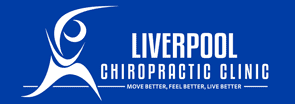 We will take a look at the different types of headaches over the next few weeks to help you identify what type of headache you are struggling with and how we can help
We will take a look at the different types of headaches over the next few weeks to help you identify what type of headache you are struggling with and how we can help
Cervicogenic Headache Description
A cervicogenic headache starts in the cervical spine—your neck. Sometimes these headaches mimic migraine headache symptoms. Initially, pain may begin intermittently, spread to one side (unilateral) of the patient’s head, and become almost continuous. Furthermore, pain can be exacerbated by neck movement or a particular neck position (eg, eyes focused on a computer monitor).
Causes
The cause of a cervicogenic headache is often related to excessive stress to the neck. The headache may result from cervical osteoarthritis, a damaged disc, or whiplash-type movement that irritates or compresses a cervical nerve. The neck’s bony structures (eg, facet joints) and its soft tissues (eg, muscles) can contribute to the development of a cervicogenic headache. Certain spinal nerves structures are involved in many cervicogenic headaches. Spinal nerves are signal transmitters that enable communication between the brain and the body via the spinal cord.. Nerve compression can cause inflammation and pain.
Symptoms
A cervicogenic headache presents as a steady, non-throbbing pain at the back and base of the skull, sometimes extending downward into the neck and between the shoulder blades. Pain may be felt behind the brow and forehead, even though the problem originates from the cervical spine.
Pain usually begins after a sudden neck movement, such as a sneeze. Along with head and/ or neck pain, symptoms may include:
- Stiff neck
- Nausea and/or vomiting
- Dizziness
- Blurred vision
- Sensitivity to light or sound
- Pain in one or both arms
- Mobility difficulties
If you are suffering from headaches, please feel free to contact us so we can make an appointment to help you with fast, effective pain relief and also to help you treat the cause of your headaches






